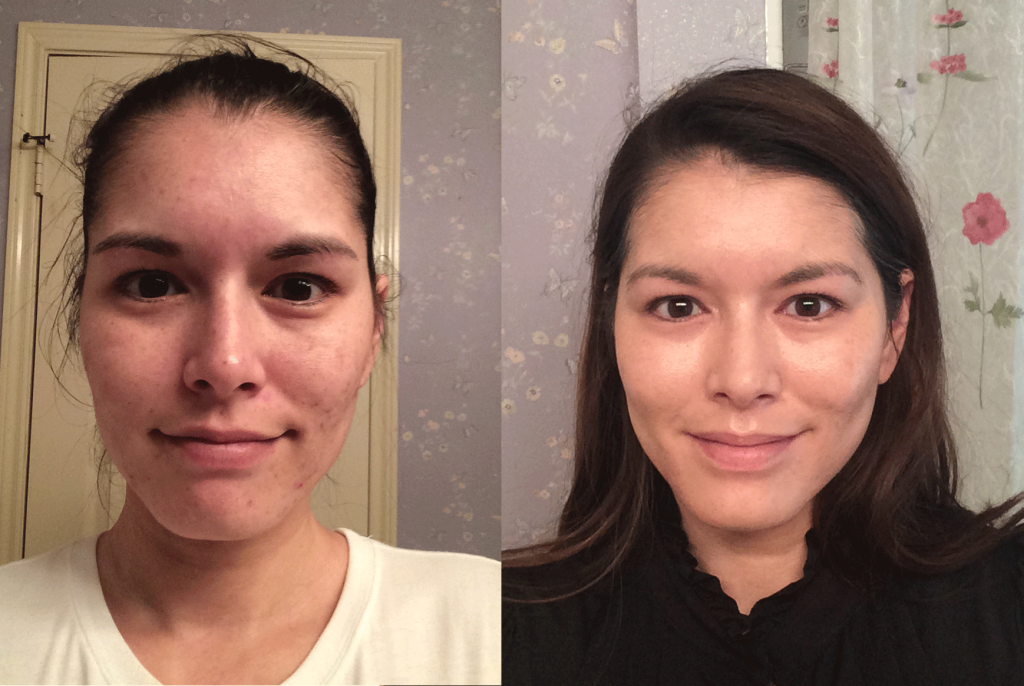How Does Tretinoin Work?
One interesting aspect of tretinoin is that scientific researchers aren’t completely aware of how it prevents acne, only that it does.
Tretinoin works by affecting the production of skin oils, although the exact process by which the medication works isn’t currently known. By changing the way skin develops and reducing levels of oil, retinoids for acne makes it significantly more difficult for pimples to develop on the face and body.
How it Works, Uses, Side Effects & More
Available as a topical cream, gel or liquid, tretinoin is a retinoid medication that’s widely used to treat acne and reverse many of the visual signs of aging. retinoids for acne is also commonly known as ATRA, or all-transretinoic acid.
The most common use of tretinoin is to remove acne. Tretinoin acts quickly and effectively to remove acne from the face by clearing skin pores and preventing pimples from developing as they normally would.
This has made topical tretinoin one of the most widely used and effective acne treatments on the market today.
As well as being used to treat acne, tretinoin is used as an anti-aging product and as an oral treatment for leukemia. It’s a safe, effective medication that’s been approved by the FDA and has hundreds of thousands of users every year.
Like almost all medications, tretinoin is available in a range of strengths and has a variety of potential side effects. In this guide, we’ll cover all of the essential knowledge about tretinoin to help you stay informed as a potential user.
What is Tretinoin?
Tretinoin is a retinoid medication that was originally developed to treat acne. As a medication, it was developed in the late 1950s and approved for medical use in 1962. Today, tretinoin is sold under a variety of brand names and is available around the world as a generic medication.
In the United States, tretinoin is most commonly sold as Retin-A, Tretin-X, Refissa, Renova and Avita. Internationally, a variety of generic medications contain tretinoin, such as Stieva-A cream.
Tretinoin comes in several different dosage forms. It’s most commonly sold as a cream, but it’s also available as a liquid solution, as gel and as a jelly.
As a first-generation retinoid, Tretinoin is chemically related to vitamin A. By affecting the way in which skin cells develop, tretinoin (and other retinoids) can reduce the development of acne and prevent many of the common aesthetic signs of aging.
How to Get the Most Out of Tretinoin
As with most skincare products, there are instructions on how to use them correctly to see optimal results. With topical retinoids for acne, patients should always apply it to their skin before bed instead of during the day. Also, it is important that patients never mix their tretinoin with products that contain glycolic acid or benzoyl peroxide.
Lastly, patients should wait at least 15-30 minutes after washing their face to apply the tretinoin.
During the first few weeks of using tretinoin, acne may appear worse as the medication works on pimples from the inside out. Patients should start to notice results eight to 12 weeks after starting tretinoin use. It is important to use this medication on a regular basis to see results.

Important Things to Know About Tretinoin
When using tretinoin, patients should be aware of the following to fully benefit from the medication. If you are interested in a skincare procedure such as a chemical peel, laser light treatment, or microdermabrasion, it is important to inform your doctor that you are using tretinoin, as they may ask you to discontinue use before your treatment.
Women who are pregnant or may become pregnant should not use tretinoin, as it could harm the child. Lastly, using tretinoin may cause sensitivity to the sun, so sunscreen must be worn anytime a patient spends time outside.
HOW TO FULLY BENEFIT FROM TRETINOIN FOR ANTI-AGING TREATMENT
Are you dealing with unwanted skin conditions such as acne or rosacea and have had no luck with treatment options? If this is this case, tretinoin may be the answer. This medication is known to do wonders for the skin, and even provide anti-aging benefits.
Read on to learn how to get the most out of using retinoids for acne for acne.

What is Tretinoin?
Tretinoin, a drug derived from vitamin A, and is used as a topical treatment for an array of skin conditions, including acne, rosacea, melasma, keratosis pilaris, and more. This product is part of a class of medications called retinoids, and affects the growth of skin cells.
Examples of tretinoin products include Refissa, Renova, and Retin-A.
Many scientific studies have been done on this medication, and medical experts agree that it offers promising anti-aging benefits to the skin. Tretinoin has been proven to prevent, reduce, and treat wrinkles. It also helps to treat and prevent age spots. By stimulating collagen production in the skin, it strengthens the skin at a structural level, resulting in a more youthful appearance.